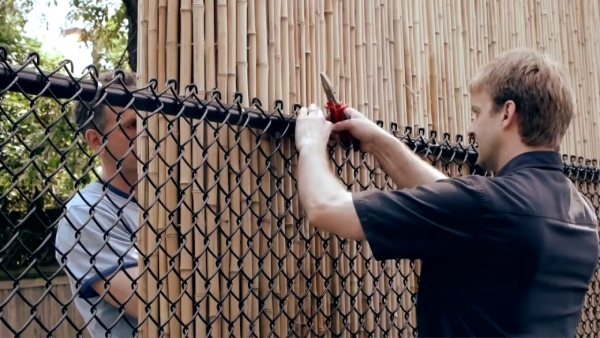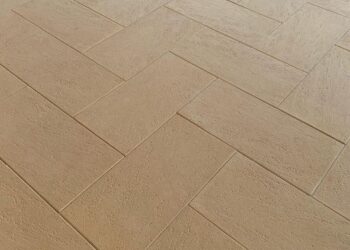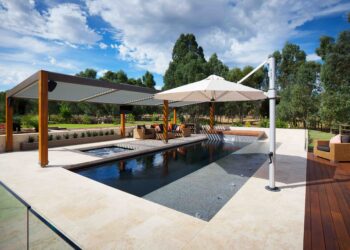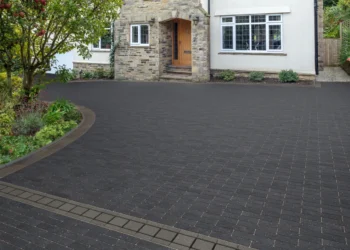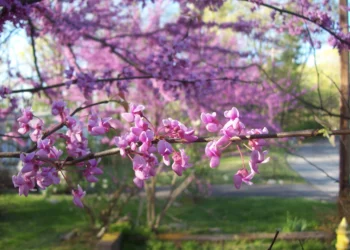To screen or not is a question many of us Aussies ask ourselves, especially in the summer. Apart from the oriental aesthetic it has going on, there is no denying that it is effective in controlling the temperature when you put it inside your home and looks pretty cool when you install it in your yard.
Despite the many uses and advantages of adding a bamboo screening to your home, you must caution yourself. As with any home décor installation, going ahead without the faintest idea about what you will experience will end up with your home looking much worse than you could ever imagine.
That’s why we have compiled this list of 8 things to know about bamboo screening you will need to take note of before adding them to your home. We will cover the most basic information and additional questions you may have if you want to install the best bamboo screening in your home.
What is bamboo screening?

Let us start this comprehensive list with the most basic information. What is bamboo screening? It’s simple: a screen of slats from cut bamboo pieces woven together. This may sound like a very vague explanation, given that they sound very similar to what we call fences. Bamboo screening is a broad term to describe any screen made from bamboo slats, whether they are used as curtains for your windows or as a barricade, you may need for the coming zombie apocalypse.
Why use bamboo screening?
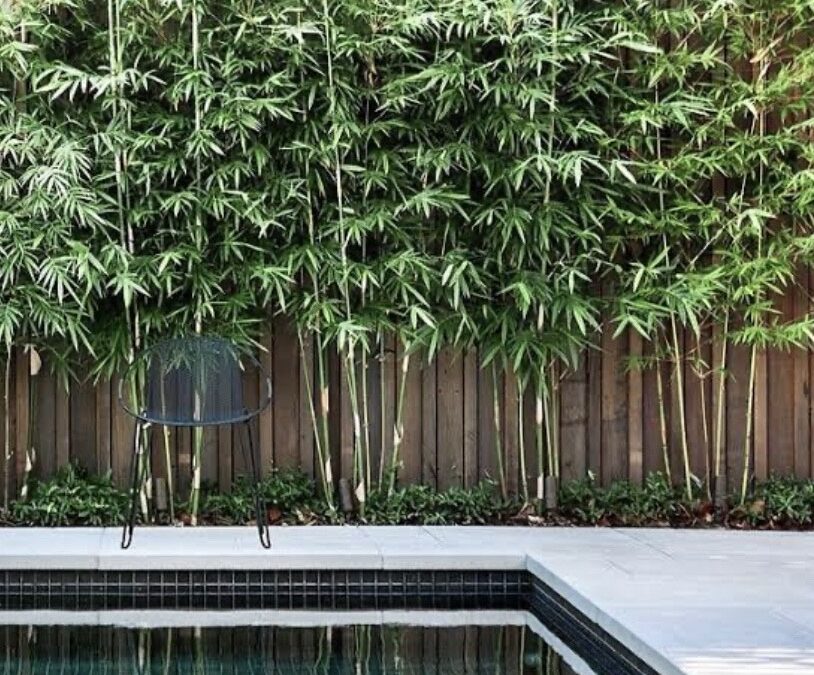
This is the most fundamental question you can ask about bamboo screening. Why go for it? You can go about putting up a privacy fence in your backyard in many ways. The same goes for choosing suitable drapes for your home. What makes bamboo screening worthwhile when you have so many alternatives that can do a better job than it? There is no fixed answer to it, as there is something for everyone.
They are green
So your neighbor’s 6-inch thick concrete wall is what you might be thinking, but we need to talk about color here. Bamboo screens are one of the most environmentally friendly options you have out there when it comes to building fences or making screens. Bamboos are the world’s fastest-growing plant, growing at a few centimeters per second. Due to this growth rate, anything that uses bamboo as an alternative instantly becomes the most environmentally friendly option.
If you are a good Australian and care about the environment as you should, always go for this option when you can. Our ozone layer has already experienced a good beating due to our excessive use of ozone-depleting chemicals, giving harmful UV rays a free ticket to land here. If you can go for a greener option, you should always go for it, even if the effect is minimal, as everything counts.
They are cool
Do bamboo screens look cool? They do. They give off an oriental vibe, like you are in a medieval Asian fantasy movie with real ninjas or thin bearded cultivators; now on to the main point. They have a cooling effect on the temperature, whether installed inside your home or out in the sun.
Granted, you need to live somewhere pleasant like Perth to ensure your bamboo screening survives the summer, as Australian weather, just like Australian fauna, is as deadly as they come. But if the climate is only a tad warm, these bamboo screenings can do a lot to cool down the temperature, making them a pretty cool member you can keep in your yard or drawing.
This is mainly due to the innate nature of the material as well as the structure of the screening that uses the small gaps between each slat to thin out the wind, making it cooler.
They are cheap
The first thing you may think when you hear the word cheap is that it lacks quality. But for plant-based products like bamboo screenings that use materials that grow in the blink of an eye, the cheapness has nothing to do with quality but an inexhaustible supply. Bamboo has always been known for being a plant that can grow even in the most unfavourable circumstances, and the environment in Australia has not been able to hinder its growth in any way. This means you can get your hands on bamboo screenings at a very affordable rate, much lower than any other alternative.
How durable is a bamboo screening?

This is a reasonable question if you have pets or kids running around your yard, live in the outback’s, or your neighbor could be a better driver out there. Bamboo screenings will be useless if you are fighting off an army of kangaroos, but if it’s just your average Golden Retriever who wants to run away from home, a bamboo screening can stop her just fine. And for kids, you won’t have much to fear unless they are running around with axes or hoes. And if they are, the bamboo screening is the last of your worries.
Now, onto the real deal. Can they survive the sun and weather the storms? Definitely, okay, not definitely, but a decent rain or snow is something very much something they can control. And the sun is not something bamboo screenings worry about.
So, unless you are in a life-or-death contest with the wild or your kids are Vikings, bamboo screenings can survive for years if you are not in one of those extreme climate zones.
How can bamboo screening be used?

This is a relatively simple question. Bamboo screenings can be used for both indoor and outdoor needs. When it comes to indoor needs, you use it either as a replacement for drapes or actual privacy screens. They do not offer much privacy, but it is aesthetically pleasing nonetheless. And in a hot Australian summer, the little temperature control it offers might save your life.
Regarding outdoor use, it is mainly used as a screen on top of an existing fence. Yes, you can have a wall made of bamboo if you are so inclined, but the most common use of bamboo screening remains as a screening used on top of wooden or concrete walls. This cuts down on many of the unique advantages of using bamboo, but in terms of durability and security, this is probably the best option available.
How to install bamboo screening?

This is also one of the less tricky ones to answer. The first step you do is to avoid splitting actual bamboo and tying them up like an uneducated cave dweller. Like a civilised person from the 21st century, you should go to your nearest Bunnings and buy a roll of bamboo screening if you want to install one.
You can get different types of different uses, so choose the right one. Once you’ve made a choice, all you have to do is follow the instructions. All you will need to do for the indoor ones are either place them exactly as they are or attach them as required.
For the outdoor ones, you will need to nail them up on the existing fence after rolling them out. It is the same if you are using a regular screening with slats or screening panels. This is relatively easy to do, and you can search online for videos to see how to do it if you want a more visual guide.
Make sure to follow the written instructions with the roll so you don’t end up with a bamboo screening that breaks down in a few days because you used the wrong nails.
How long do bamboo screenings last?

The straightforward answer is that they will last up to 20 years under the right circumstances. Since suitable events include a pleasant climate throughout the year, only places like Perth can provide those circumstances. For the relatively less tame side of the country, especially the outbacks, expect them to last a few years at best.
Since they are relatively cheap to acquire, this will help your wallet. All of this only applies to the outdoor ones. The indoor ones will easily last over a dozen years if kept clean and away from pests.
Can you paint bamboo screenings?

Yes, you can, as long as you are using oil-based paints. Synthetic paints do more harm than good when you use them on natural plant-based products like bamboo screenings as they do not take well to the chemicals in them. As long as it is a mild oil-based paint, it will protect the screening from harsh weather and help it last much longer. There is no shame in using paint on bamboo screening as they are necessary to protect them against the harsh Australian sun.
Will termites eat through bamboo screening?

This is one question everyone is curious about. Since it is a type of plant-based screening, are they especially vulnerable to termites? Fortunately, bamboos are innately resistant to termites. That’s one thing you will never have to worry about and is one of the most significant advantages of going for a bamboo screening.
That’s everything you need to know before installing a bamboo screening in your home. If you are going to install one for outdoor use, consult a professional if you are nervous about it, as these are meant to last a few years, and you don’t want to damage them before you fix them up. If you carefully follow the instructions, you can take away a cool-looking bamboo screening with little effort.

